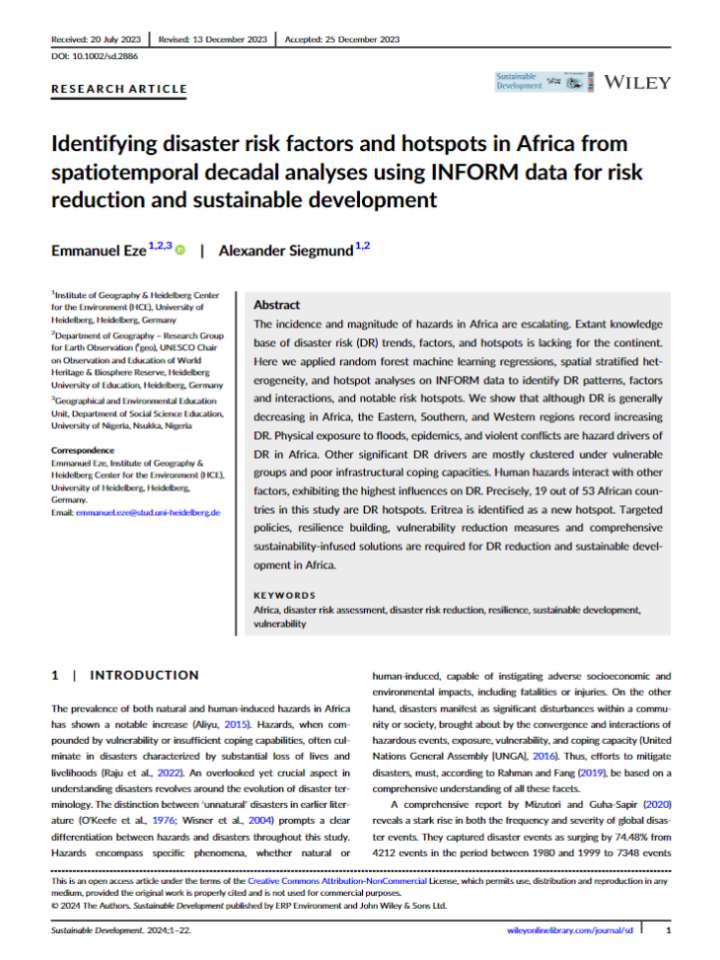Identifying disaster risk factors and hotspots in Africa from spatiotemporal decadal analyses using INFORM data for risk reduction and sustainable development
This study unveils diverse disaster risk trends and patterns, revealing variations in hazards, vulnerability, and coping capacity across African countries by utilizing the INFORM risk model data spanning from 2012 to 2022. The research identifies countries with both ascending and descending disaster risk trends, providing insights into the dynamic nature of disaster risk in the region. Notably, a discernible declining trend in inadequate infrastructural coping capacity is observed, while institutional coping capacity faces an increasing deficit.
The results indicate an overall decrease in DR across the continent over the studied period, albeit with regional variations. Specifically, the patterns of DR in Central and Northern Africa align with the continental trend, showing a decline. In contrast, Eastern, Western, and Southern Africa exhibit increasing trends in DR during the same period. Notably, Eritrea emerged as a new hotspot. While Burundi, Chad, Djibouti, Niger, Rwanda, Somalia, and Uganda, exhibited consecutive hotspot trends; Central African Republic and Kenya intensified in DR, and Ethiopia, South Sudan, and Sudan remained persistent hotspots.
Explore further
